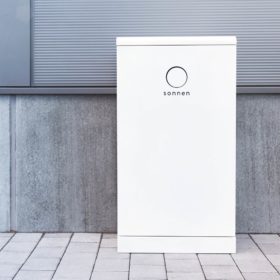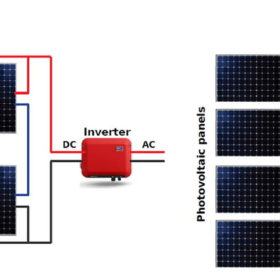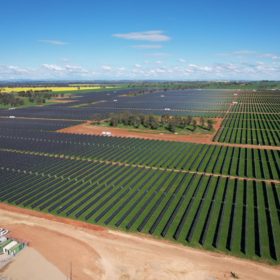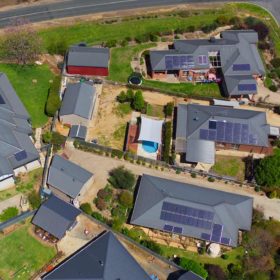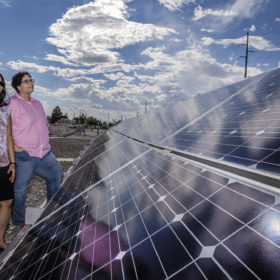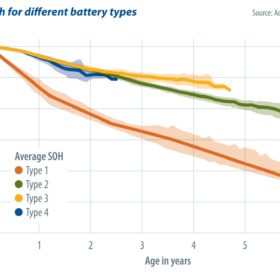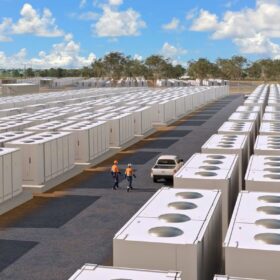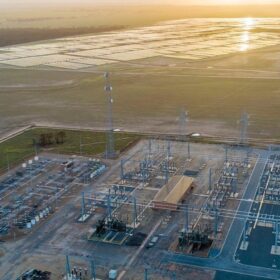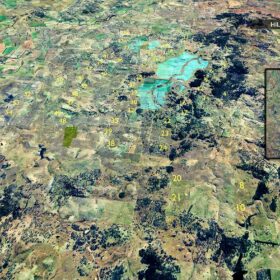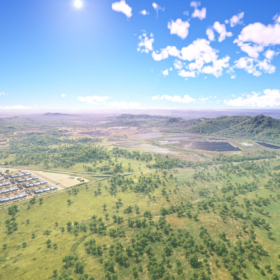Western Australia launches $35 million ‘symphony’ of residential renewable assets
Western Australia has today announced the launch of its $35.5 million Virtual Power Plant trial, Project Symphony, which will examine the ways in which residents, utilities, and network operators can join forces to centrally orchestrate the output of rooftop solar, batteries and other distributed resources to best serve both customers and the grid at large.
Sonnen launches residential battery specifically designed for Australia, marking shift in global strategy
German company sonnen, a wholly owned subsidiary of Shell, today launched a new residential battery storage system specifically developed for Australia and New Zealand. Chief Commercial Officer of sonnenGroup and Managing Director of sonnen Australia, Nathan Dunn, told pv magazine Australia its sonnenBatterie Evo is the culmination of a new approach and may go on to inform how its future products for global markets are developed.
Micro-inverters vs. string inverters
A French research group has compared the performance ratio of 100 PV systems relying on micro-inverters with that of 100 installations relying on string/central inverters. It found the performance ratio is around 79% for both system typologies and that arrays with micro-inverters are more sensitive to environmental factors.
90 MW Sebastopol Solar Farm near Wagga Wagga reaches commissioning phase
Fotowatio Renewable Ventures Australia’s 90 MW (AC) solar farm outside Wagga Wagga, New South Wales, has reached the commissioning phase after less than a year of construction. Barring no obstacles, the project should start exporting solar energy to the grid in a matter of months.
WA introduces remote solar switch off, following SA model
Western Australia has become the second state to give network operators the capacity to remotely switch off residential solar systems as an emergency grid stability mechanism.
Grid-forming big battery breaks ground in South Australia
AGL has “broken ground” at Torrens Island power station in preparation for the construction of its 250 MW/250 MWh battery which has drawn interest for being the largest planned grid-forming battery in the world.
Behind the price drops in lithium-ion batteries
Scientists in the United States pieced together data from hundreds of different sources, looking to establish the key factors that have led to consistently falling prices for lithium-ion technology since their commercialisation thirty years ago. They find that public-funded research, primarily in chemistry and materials science, has made the largest contribution to cost reduction. And they offer suggestions on policy and investment to ensure that the research can continue to make these important contributions to reduction in battery costs.
Phase-change material tech to store thermal energy, solar electricity in buildings
NREL scientists have unveiled a storage system based on a phase-change material that can store both thermal energy and electricity in a single device. According to the researchers, the new technology may be used to store excess electricity produced by on-site solar or wind operations in large scale buildings.
Sunday read: Forecast and prosper
At the risk of stating the obvious, PV performance will always be inextricably linked to the weather. Cloud cover significantly influences power output and severe weather events – including high winds, heavy snowfall, fire, and hail – can lead to module or structural damage. And with climate change making extreme weather events more common, the value of forecasting and understanding the worst Mother Nature can throw at a solar array is increasing.
Saturday read: Battery performance, uncovered
Batteries are taking the energy world by storm. From residential home storage systems to large-scale installations, today’s society increasingly relies on powerful batteries. And, as we all know, with great power comes great responsibility. But, how can we ensure that our use of batteries today is responsible, cost-effective, or even safe? Kai-Philipp Kairies, CEO of Accure Battery Intelligence, shares some of his experience gained from monitoring more than 750 MWh of various storage applications.

